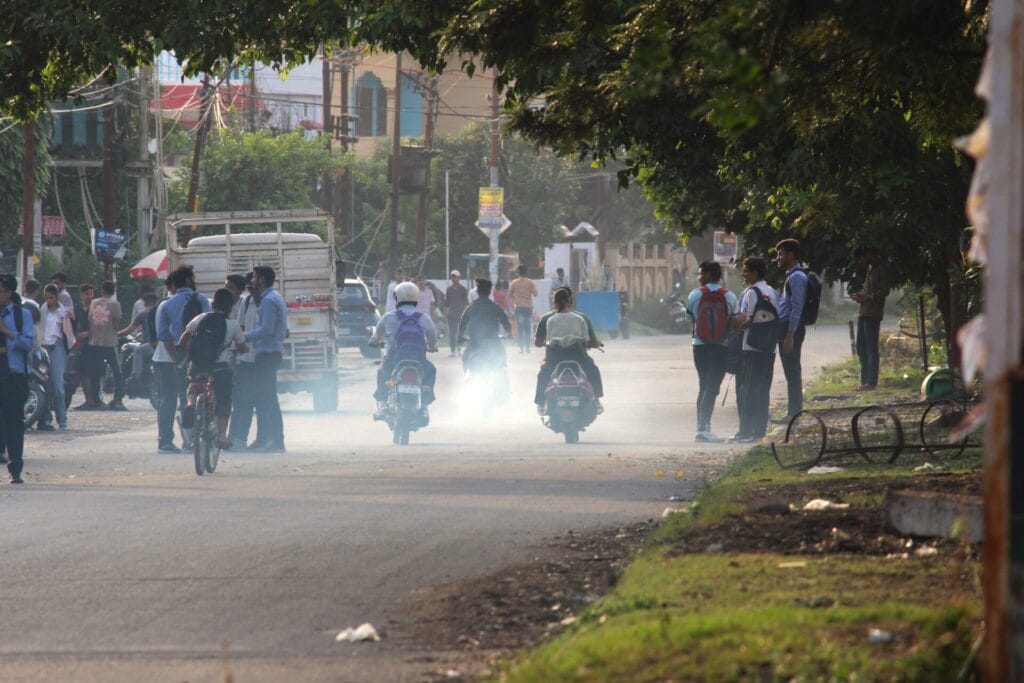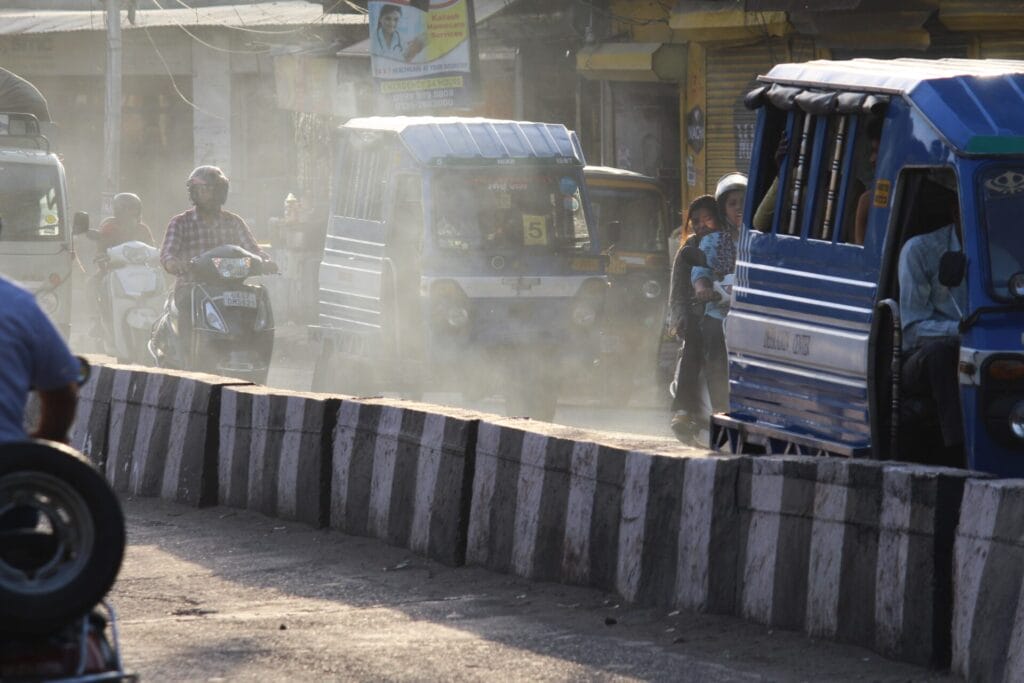As autumn creeps in and festival season begins, the quality of air in our cities grows murkier than usual. And then, as we move towards winter, the situation only becomes progressively worse. The air pollution menace in urban India is probably the greatest threat to health and well-being of the people as things stand. According to a 2021 study, unsafe levels of PM2.5 lead to approximately four million premature deaths annually, across the globe. Of this, 25% occur in India. And contrary to what many might deduce from the usual talk around air pollution, it is not only the large metropolitan cities that bear the brunt of it.
Take the hill town of Dehradun, for instance. Situated in the Doon Valley in the foothills of the Himalayas, Dehradun has emerged as an important business centre, educational hub and tourist destination in North India. But thanks to haphazard urbanisation, industrialisation and rapid infrastructure development, air quality in the town has plummeted.
Dehradun was ranked 31st in the list of most polluted cities in the world (WHO, 2016). This beautiful city was again listed among the top ten cities experiencing poor air quality in Greenpeace Report, 2017. It is also one of the 132 non-attainment cities declared under National Clean Air Program (NCAP), 2020.

In Dehradun, the concentration of SO2 and NO2 is always within the permissible limits as per Indian standards, but levels of PM10 and PM2.5 are a major concern in the city. High concentration of these particles affects the daily lives of residents and causes significant health issues, including eye and throat irritation, coughing or difficulty in breathing, and asthma. Longer exposure to PM can also result in serious lung and heart disease.
In photos: The sources of pollution in Dehradun
Poor air quality in Dehradun is the result of a number of factors. According to the Uttarakhand Pollution Control Board (UKPCB), the top three major sources of air pollution for Dehradun city are vehicular emissions, dust from road, construction & demolition activities, and unregulated garbage burning. Other sources are open sewage, industrial smoke and household activities.
Vehicular emissions
According to the State Transport Department, the number of registered vehicles in the city has gone up by 750% from the year 2000 to 2020. The increasing number of vehicles increases the likelihood of traffic congestion, which increases vehicle emissions and degrades air quality resulting in increased morbidity and mortality, especially for drivers and marginalised groups living near busy roadways.

Resuspended dust
The city experienced rapid development in the last twenty years. This rapid development, and the construction and demolition activities in its wake, have a significant impact on local air quality. Construction dust fills air with a high proportion of airborne particulate matter which affects the health of thesurrounding population. Construction site workers, labourers and people living at the construction site are at an increased risk of work-related illness (WRI) due to prolonged exposure to and inhalation of dust.

Unregulated garbage burning
Non-segregated solid waste and dry leaves are often being disposed of by burning. Most of the times people behind this practice are workers from Nagar Palika who cleans the road, they want to dispose of the garbage quickly by burning it. Sometimes garbage is also burnt at dumping sites. Combustion of waste contributes to air pollution that affect the health of marginalized social groups living near the disposal sites.

Who bears the cost?
Air pollution does not have a uniform impact on all, across the globe. A study titled “Inequality of low air quality related health impacts among socioeconomic groups in the world of work” supported the fact that the group of informal workers has been hit harder than any other groups by the increasing health effects of air pollution. The inequitable distribution of health risk associated with air pollution can be seen at two levels: (i) because of economic and social disparities and (ii) because of differential occupational exposure.
Read more: Women construction workers face serious health and safety hazards at work and beyond
Economic and social conditions
It’s difficult to escape from air pollution anywhere, but in terms of air quality, the areas in Dehradun which were most polluted a few years ago continue to be polluted whereas the least or non-polluted areas are still clean. Unfortunately, you will find that people belonging to the lower socio-economic strata — for example, informal workers — mostly live in the polluted areas of the city. Thus, in a way, their economic and social conditions expose them to worse air, making them more susceptible and vulnerable to the ill effects of pollution. The following images illustrate such inequity:
Longer exposure to open garbage burning can result in long term health issues. This is a common practice near the Bindal bridge area of the city, that houses a population of 1.25 lakh people, mainly home to vendors, auto drivers and waste-picker families.

Prem nagar, a busy market area located in the west part of the city, shows high concentration of PM due to excessive vehicular emissions, which is unhealthy for the shopkeepers, vendors, mechanics who form the predominant section of residents living by the side of this road.
The relationship between open sewage systems and slums is well-known. These heavily polluted open waterways emit toxic gases, which can cause severe health impact upon longer exposure. The number of such informal settlements in Dehradun varies between 250 and 5,000 and is spread across various critical locations in the city, populated by low-income informal sector workers.
Most migrant labourer families, who have one or two family members working in any industrial site in the city, prefer to live in its vicinity. They are thus always exposed to the industrial emissions, which release huge amounts of organic compounds into the air. This increases the risk of respiratory infections, especially among children and elderly people in these populations.
Occupational exposure
The nature of work that one is employed in, the duration of their outdoor exposure and the work location are all critical factors in the amount of pollution that they are exposed to. A study on ambient air pollution in Dehradun reveals that the concentration of air pollutants is highest at bus/railway terminals, followed by commercial areas and industrial areas, and anyone can easily observe the presence of informal workers at these places.
In a discussion with informal workers, it emerged that on an average, drivers, street vendors and day labourers living in Dehradun city spend almost 12, 11 and 8 hours working outdoors, mostly in the locations mentioned above.
Also, often the time that they spend outdoors overlaps with the peak pollution hours in the city. Vikram, auto, bus and e-rickshaw drivers who work from early morning hours till late evening are relatively more exposed to air pollution, and the same can be said of street vendors who spend an average 11 hours on road. Construction workers, cobblers, petrol pump workers and mechanics, who spend almost one third part of their day on roads, constitute other such vulnerable population.



How informal workers of Dehradun deal with air pollution
Despite being the most exposed and vulnerable, the urban poor in Dehradun do not consider air pollution as a priority risk. Lack of access to education and socio-economic marginalisation do not allow them the option to adopt the changes in lifestyle and living conditions required to protect themselves. As a result, they are often found adopting weak, unsubstantiated mitigative steps: eating jaggery, putting kajal in their eyes, having ginger tea etc.
It is not the reality in Dehradun alone. A lot has to be done at national and global scales to correct such environmental disparities. The first step towards environmental justice includes acknowledging these facts, taking responsibility and reflecting that in policy making.
A multifaceted, inclusive and sustainable approach encompassing urban planning, environmental management and public awareness is needed to address both air quality and public health emergencies, with the highest priority accorded to protection of urban marginalised groups.



What ahout rising number of beggars ?number of females with babies is quite shocking. Little girls are begging at almost every red light? Are police and reporters sleeping?
Excellent article on àir pollution. Similar study must have been conducted on water and sound pollution. Please publish it too. Good work and pictures.
Thank You Sir.
Very good article.
You should send it CM office as well as PMO , double engine sarkar for their immediate action.
Thank you sir for your suggestion.
And where do most of these urban poor come from? What about the increase in tourist footfall. The development that ruined the canal system adding to the pollution besides the demise of the green cover, the orchards and basmati farms. There’s the corruption and illegal construction as well. Old Doon natives are a well educated lot who went to eminent institutions of the city yet our cries fall on deaf years.
A major chunk of these urban poor come from the neighboring states like Uttar Pradesh and Bihar. Most of them also belong to the upper areas of Uttarakhand.
Also Please mention what are the Solutions ? What is the Local Govt ( MDDDA ) DOING about it ?